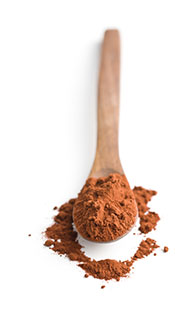
Cocoa powder is one of the world’s oldest foods, and it is also one of the healthiest.
Interestingly, cocoa powder has been enjoyed for more than 4000 years now.
With a history predating the Mayans and going all the way back to pre-Colombian tribes, cocoa’s popularity has shown impressive longevity.
Containing substantial amounts of essential nutrients, it is one of the most nutrient-dense foods in the modern diet.
Cocoa features in all sorts of chocolate products ranging from dark chocolate to cakes and various sweet snacks.
This article examines the nutrition profile and health benefits of pure, unsweetened cocoa powder.
What Is Cocoa Powder?
Cocoa powder is made by grinding and pressing fermented cocoa beans (Theobroma cacao seeds) to remove the natural cocoa butter.
After removing the cocoa butter, a dry and bitter powder remains.
Since the taste is so bitter, cocoa powder is generally combined with other ingredients to make products such as chocolate and chocolate milk.
For instance, it is mixed with hot milk and sugar to make hot chocolate. It can also be combined with cocoa butter and sugar to make a chocolate bar.
Cocoa-based drinks are probably quite different from how traditional chocolate drinks were made, which likely looked more like brewed cacao.
Cocoa powder is light brown in color, and it is very rich in nutrients, as we will now examine.
Nutrition Facts
The table below shows the calories and macronutrient details per 100 grams of cocoa powder (1).
| Amount (kcal / Grams) | |
| Calories: | 400 kcal |
| Carbohydrate: | 57.9 g |
| – Fiber | 33.2 g |
| – Sugar | 1.8 g |
| Fat | 13.7 g |
| – Saturated Fat | 8.1 g |
| – Monounsaturated Fat | 4.6 g |
| – Polyunsaturated Fat | 0.4 g |
| Protein | 19.6 g |
As shown, cocoa powder provides a mixture of carbohydrate, fat, and protein.
The majority of the fat content is saturated and monounsaturated, and it contains a significant amount of fiber.
Vitamins
| Vitamin | Amount (% DV) |
| Riboflavin | 14 % |
| Niacin | 11 % |
| Folate | 8 % |
| Vitamin B6 | 6 % |
| Thiamin | 5 % |
| Vitamin K | 3 % |
| Pantothenic Acid | 3 % |
| Vitamin E | 1 % |
Cocoa powder does provide a decent range of vitamins, but it is not particularly high in any of them.
B vitamins are the most concentrated vitamins in cocoa.
Minerals
| Mineral | Amount (% DV) |
| Manganese | 192 % |
| Copper | 189 % |
| Magnesium | 125 % |
| Iron | 77 % |
| Phosphorus | 73 % |
| Zinc | 45 % |
| Potassium | 44 % |
| Selenium | 20 % |
| Calcium | 13 % |
As we can see, cocoa powder supplies a substantial concentration of minerals.
Notably, there is an abundant supply of the minerals manganese, copper, magnesium, and phosphorus.
It is important to note that this nutrient profile is for unsweetened cocoa powder.
Hot chocolate mixes that contain sugar and other additional ingredients will not offer the same nutritional values.
Health Benefits of Cocoa Powder
Cocoa powder has a wide range of health benefits.
Some of these are due to the specific nutrients it contains, and others involve the polyphenols that cocoa provides.
1. Cocoa Powder Is a Rich Source of Polyphenols
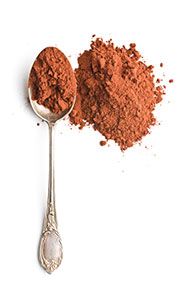
Cocoa powder is a rich source of polyphenols, and it contains more of these compounds than almost any other food.
Polyphenols are an interesting area of study in nutrition. Previously, they were believed to have direct anti-oxidant effects, but this has since proven to be unlikely.
However, polyphenols do appear to affect signaling systems in the body and upregulate various biological processes (2, 3, 4).
Markedly, several clinical trials have shown that cocoa powder can have powerful effects in health interventions.
For instance, in one randomized, clinical trial, forty-two patients were given 40 grams of cocoa powder per day for four weeks. Subjects who showed higher urinary cocoa polyphenol metabolites exhibited significant increases in HDL & significant decreases in oxidized LDL levels (5).
HDL (high-density lipoprotein) is believed to be protective against cardiovascular risk, whereas oxidized LDL is a significant risk factor (6, 7).
Further, an independent critical review of randomized trials found that cocoa powder “may prevent or even reduce vascular inflammation” (8).
2. High in Fiber
If we look at the carbohydrate content of cocoa powder, it is surprising how high in carbs it is.
Per 100 grams, cocoa powder contains well over 50 grams of carbohydrate.
However, the vast majority of this carbohydrate comes from fiber, with 33 grams of fibrous carbs per 100 grams.
Compared to simple sugars and starch, our body does not break soluble fiber down into glucose, so it does not affect blood glucose or insulin levels.
Additionally, fiber can have several benefits for our health. For example, after protein, fiber is the nutrient most associated with satiety.
Compared to refined carbohydrates, fiber leads to fewer food cravings, and a decreased appetite (9, 10).
3. Significant Source of Dietary Magnesium
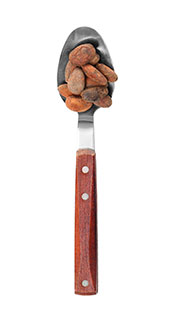
Every vitamin and mineral has importance for our body, which is why they are called “essential.”
However, magnesium is one of the most important nutrients for our overall health.
On the positive side, cocoa powder is one of the world’s best dietary sources of magnesium, providing 125% of the RDA per 100 grams (1).
Concerning the importance of this mineral, recent research has found that;
- Higher circulating levels of magnesium is adversely associated with cardiovascular disease, and further research is investigating magnesium’s role as a preventative agent (11).
- A systematic review demonstrated that higher serum magnesium levels are associated with a lower risk of metabolic syndrome (12).
Cardiovascular disease and metabolic syndrome are a modern epidemic, and ensuring sufficient magnesium intake appears to help reduce our risk.
4. Increases HDL “Good Cholesterol” Levels
High-density lipoprotein (HDL) is the so-called “good cholesterol.”
As previously mentioned, higher HDL levels are associated with a lower risk of cardiovascular disease.
Cocoa powder also seems to be a convenient and easy way to increase HDL levels.
For example, many studies show that cocoa consumption reliably increases HDL (13, 14, 15, 16).
5. Cocoa Powder Has Mood-Boosting Properties

Chocolate is well known for its ability to make people feel happy.
However, is that just because of the delicious taste? Or is there something more to it?
The answer appears to be the latter.
When we consume cocoa, it stimulates our brain to release hormones known as endorphins.
Interestingly, these endorphins trigger our brain’s “reward system” and promote positivity (17).
Randomized, controlled trials investigating this effect on mood suggest that cocoa supplementation increases positive mood (18, 19).
The theobromine content of cocoa may also affect mood.
6. Cocoa Powder May Improve Cardiovascular Health
Regular consumption of cocoa powder may improve cardiovascular health through various pathways.
Firstly, systematic reviews demonstrate that cocoa intake helps to reduce blood pressure, which is one of the most significant cardiovascular risks.
On this note, a meta-analysis of 10 randomized, controlled trials involving 297 patients found that consumption of cocoa products led to reductions in average systolic blood pressure of 4.5 mm Hg and lowered diastolic blood pressure by 2.5 mm Hg (20).
Recently, a Cochrane review systematically analyzed randomized, controlled trials on cocoa and blood pressure. In conclusion, they found that cocoa has a “small but statistically significant” impact on reducing blood pressure (21).
Furthermore, supplementation with cocoa powder appears to reduce oxidized LDL levels.
Based on randomized trials, it is thought that flavonoids in cocoa help to reduce the susceptibility of LDL to oxidation (22, 23).
Lastly, cocoa appears to have a protective effect on endothelial function. Both in vitro and in vivo clinical show that cocoa improves microvascular and macrovascular function (24).
Concerns
Generally speaking, cocoa is a healthy and nutritious food that is good for you.
However, as with many other foods, there are some potentially negative points worth considering too.
1. Heavy Metal Contamination
On the negative side, heavy metal contamination can sometimes be problematic for cocoa powder producers.
In 2017, the independent testing company, Consumer Labs, found that several brands of cocoa powder contained high levels of lead and cadmium.
These levels were in breach of the safety limits of 0.3 mcg of cadmium per gram set by the World Health Organization (25).
A 2022 report also demonstrated that many dark chocolate bars contain high levels of cadmium and lead.
Cadmium may accumulate within the body, and it is a known human carcinogen (26).
The reason that cocoa sometimes contains this metal is because the cocoa plant uptakes it from the soil (27).
However, it is worth remembering that cadmium naturally occurs in soil and can be found in many different plants. The issue is more publicized due to cocoa and chocolate’s more commercial nature.
Furthermore, the absolute amounts found in cocoa were still very small, and there is no evidence that trace amounts will cause harm.
Lastly, optimal levels of the minerals zinc, iron and calcium are protective and decrease the amount of cadmium we can absorb (28).
Cocoa powder and various dark chocolate bars
2. Sugar-Sweetened Cocoa Powders / Hot Chocolate Are Not Healthy
First of all, all the benefits that cocoa powder intake can provide are based on unsweetened cocoa powder.
There is a range of cocoa powders and hot chocolate mixes available on store shelves, and many of them are heavily sweetened to provide a better taste.
While these products will still contain beneficial nutrients, the amount of sugar they provide will cancel out the health benefits.
In other words; for health purposes, unsweetened cocoa powder or cocoa nibs are the best choices.
Alternatively, dark chocolate with a high cocoa percentage can contain significant amounts of cocoa powder.
Here is a range of dark chocolate bars that contain high proportions of cocoa.
How To Use Cocoa Powder

Knowing how to use cocoa powder can be difficult at first for some people; so, what can you do with it?
Here are three simple ways to use cocoa powder;
1) Chocolate Black Forest Milkshake
Combine 1 cup (250 ml) of milk with 1.5 tablespoons of cocoa powder, and then add half a cup (75 grams) of berries.
Blueberries, strawberries, blackberries, and raspberries are all good choices or any combination of the above.
Blend and enjoy.
2) Healthier Hot Chocolate
Making a hot chocolate without the sugar is reasonably healthy, and it tastes just as good.
Try combining the following ingredients;
- 1 cup (250 ml) milk
- 1 fl oz (30 ml) heavy cream
- 1 tbsp cocoa powder
- Vanilla extract
- Sweetener (optional)
To make this, blend the ingredients before transferring to a pan.
Bring to the boil and then simmer for a few more minutes on a low to moderate heat.
3) Cocoa-Crusted Steak
While people tend to use cocoa powder for desserts and sweet-tasting recipes, it works surprisingly well with steak.
Here are the ingredients;
- 1 tbsp cocoa powder
- 1/2 tsp cloves
- 3/4 tsp cinnamon
- 1 tsp extra virgin olive oil
- 1/2 tsp salt
- Black pepper (to taste)
Firstly, coat the steak in olive oil and salt.
After this, combine the remaining ingredients in a bowl and mix them well.
Once thoroughly mixed, rub the seasoning mixture into the steak, ensuring it is fully covered on all sides, and then grill.
Final Thoughts
Including cocoa powder in our diet is a simple, healthy (and often tasty) way to increase our intake of essential minerals.
Additionally, a range of research suggests that cocoa polyphenols may benefit cardiovascular health.
All in all, cocoa powder is one of the most nutrient-dense plant foods we can eat.


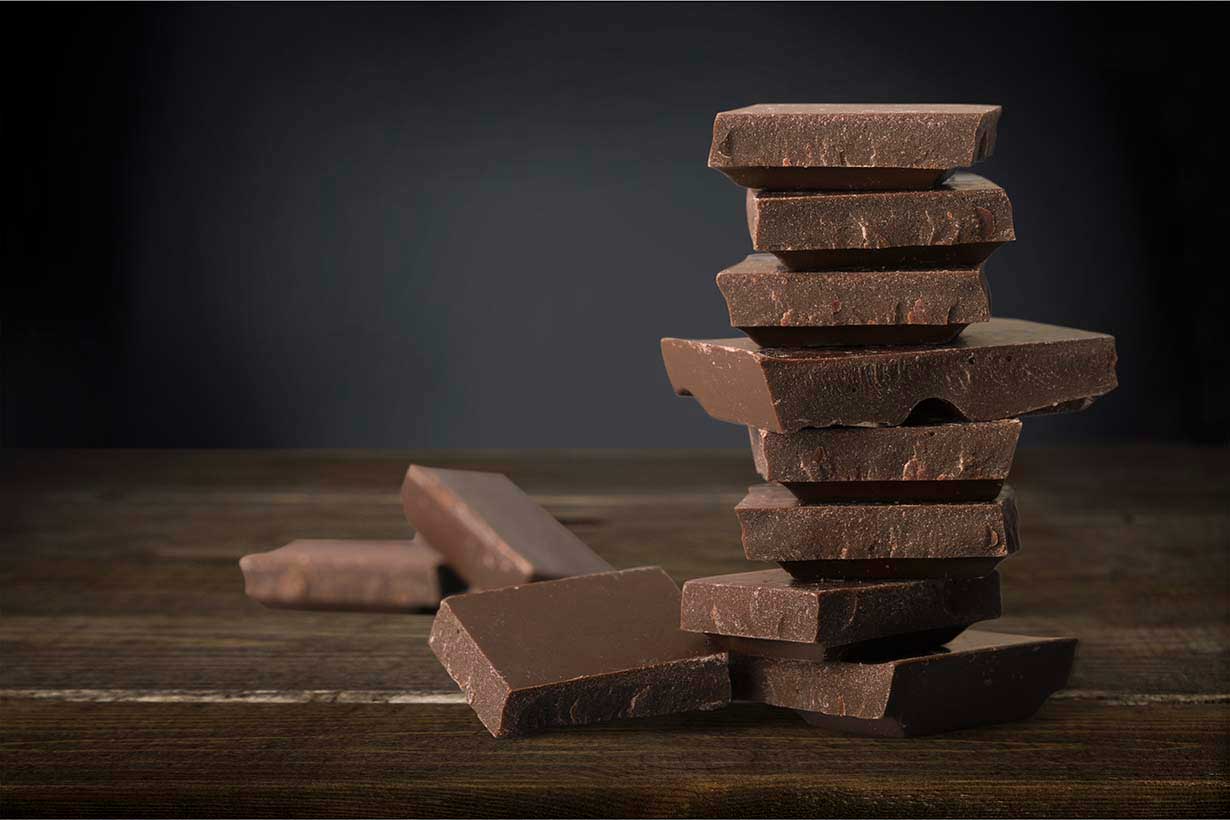

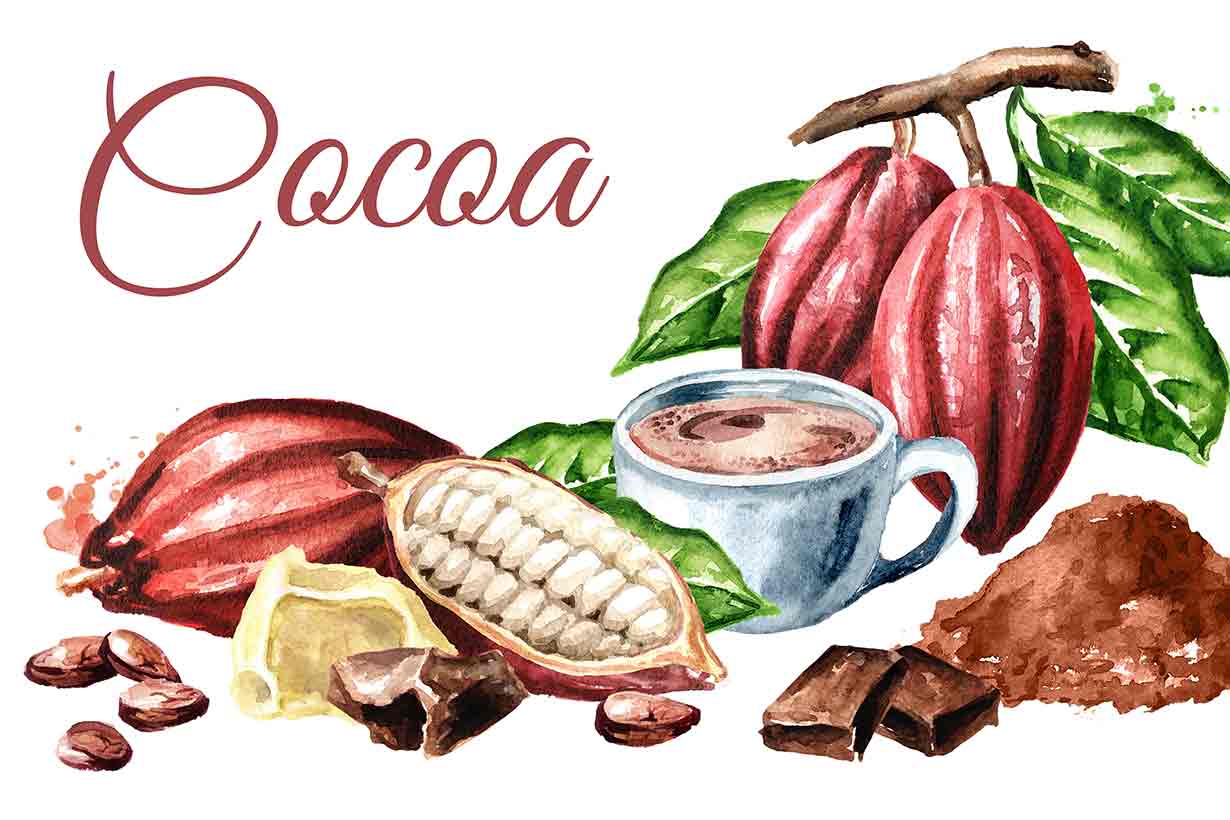
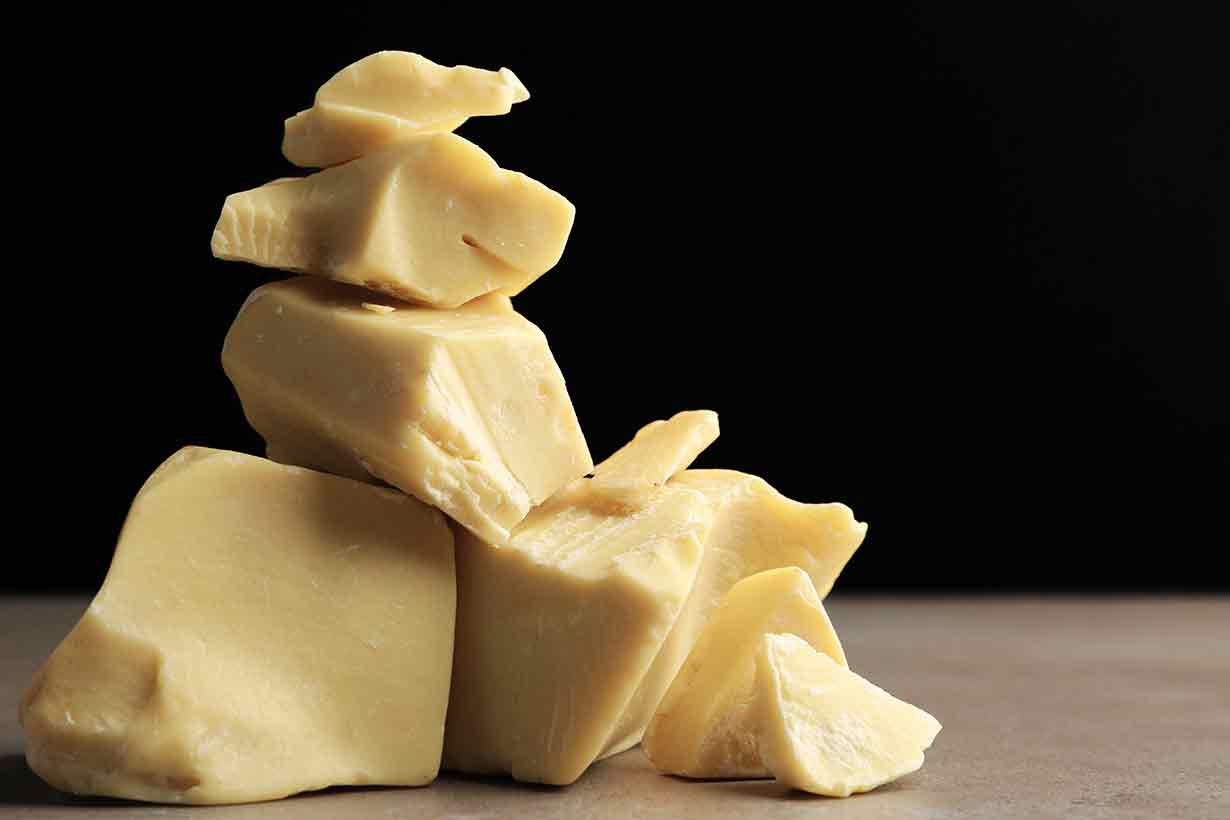

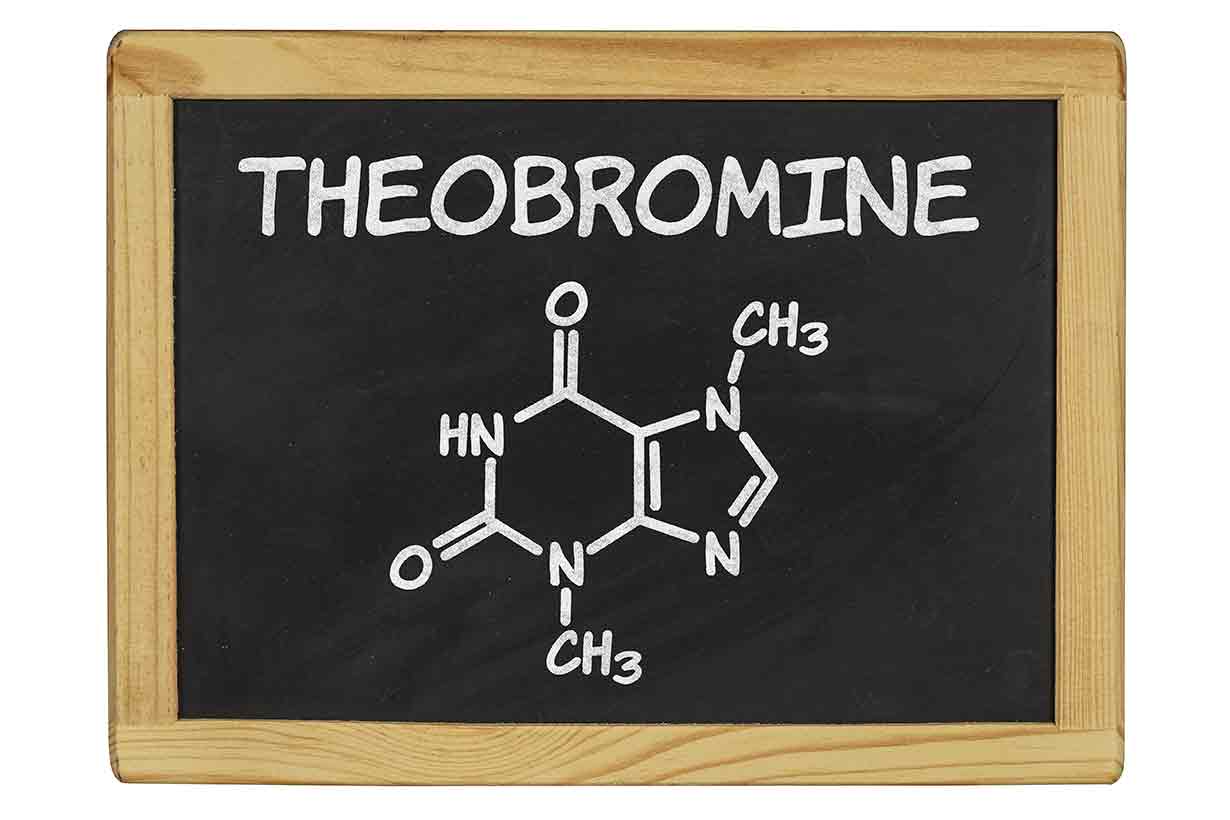

Very interesting, I use to think cocoa powder is not good for health.
Perhaps true if it has lots of sugar in it.
Otherwise, I think the positives outweigh any potential concerns.
Is alkalized cocoa have got benefits for health? (vs raw and non alkalized?)
Alkalization will reduce the flavonol (polyphenol) content of the cocoa, but everything else i.e. the nutrient profile and minerals will be the same.
I grew up on coco as a powder and in the form of a stick. we had these as drinks which were treats. do families have treats now-a-days?
Wow, cocoa sticks? Sounds interesting!
I think that nowadays families probably have too many treats…